Astigmatism: Causes, Types, Symptoms & Treatment
Ask our optical dispenser
Your request was successfully submitted!

When life gets blurry, adjust your vision. Have you found yourself wondering why your vision is blurred or distorted? Do you also get eyestrain or headaches with this unfocused vision? These may be early signs of astigmatism. Read on as we uncover what astigmatism is and what the main causes are.
What is astigmatism, and how does astigmatism affect vision?
Astigmatism is an eye condition where the cornea has an irregular shape. It is not perfectly round, so it cannot focus light evenly onto the retina located in the back of the eye.
If your lens and cornea are not equally curved when light enters the eye, it will not be adequately refracted. Opticians refer to this as a refractive error. Astigmatism is a common eye refractive error, similar to farsightedness and nearsightedness, which can be easily corrected with glasses.
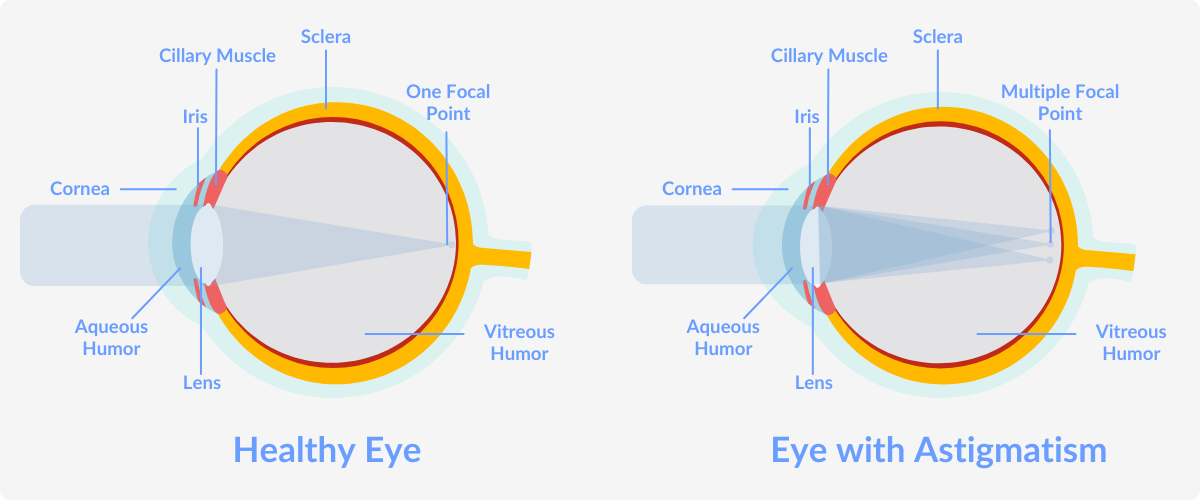
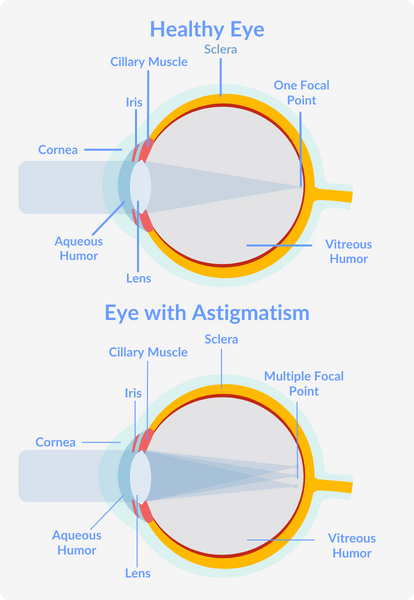
DID YOU KNOW?
There are 2 main types of astigmatism but there is also other kinds based on other rfeactive issues.
What causes astigmatism?
The main cause of astigmatism is the lens’s or eye curvature’s irregularity. In some cases, people are born with astigmatism. In other cases, it can still be genetic but only develop after years. Other causes of astigmatism can be induced after eye surgery, an injury, or caused by an eye disease.
Usually, people can develop astigmatism alongside other visual impairments, such as farsightedness and nearsightedness.
Astigmatism symptoms
The extent of astigmatism will affect the level of blurriness in your vision, some may be more severe than others. Other symptoms, alongside blurred and distorted vision, can also include headaches, eyestrain, and difficulty seeing at night.
If, as an adult, you begin to experience blurred vision, you should have an eye test to check for astigmatism or other visual impairments. It is, however, recommended you have a regular eye check-up at least every 2 years or more frequently if you suffer from an existing eye problem.
For children, having regular eye tests is best to help detect any early signs of astigmatism, as some younger kids may not initially be aware of the visual problem.
Types of astigmatism
There are 2 main types of astigmatism:
- Corneal astigmatism. This is the most common and is caused by a misshapen cornea.
- Lenticular astigmatism. Similar to the previous one but affects the lens instead. Some people can have a well-shaped cornea but still have lenticular astigmatism.
However, based on the different refractive errors, there are other types of astigmatism:
- Myopic astigmatism: Nearsightedness combined with astigmatism happens when both curves are fixated in front of the retina.
- Hyperopic astigmatism: Farsightedness and astigmatism in the eye where both curves are fixated behind the retina.
- Mixed astigmatism: This happens when curves are both near and far-sighted.
Astigmatism can also be identified in two other ways. Regular astigmatism occurs when the curves are at 90 degrees, so perpendicular. On the other hand, irregular astigmatism doesn’t have curves at 90 degrees.
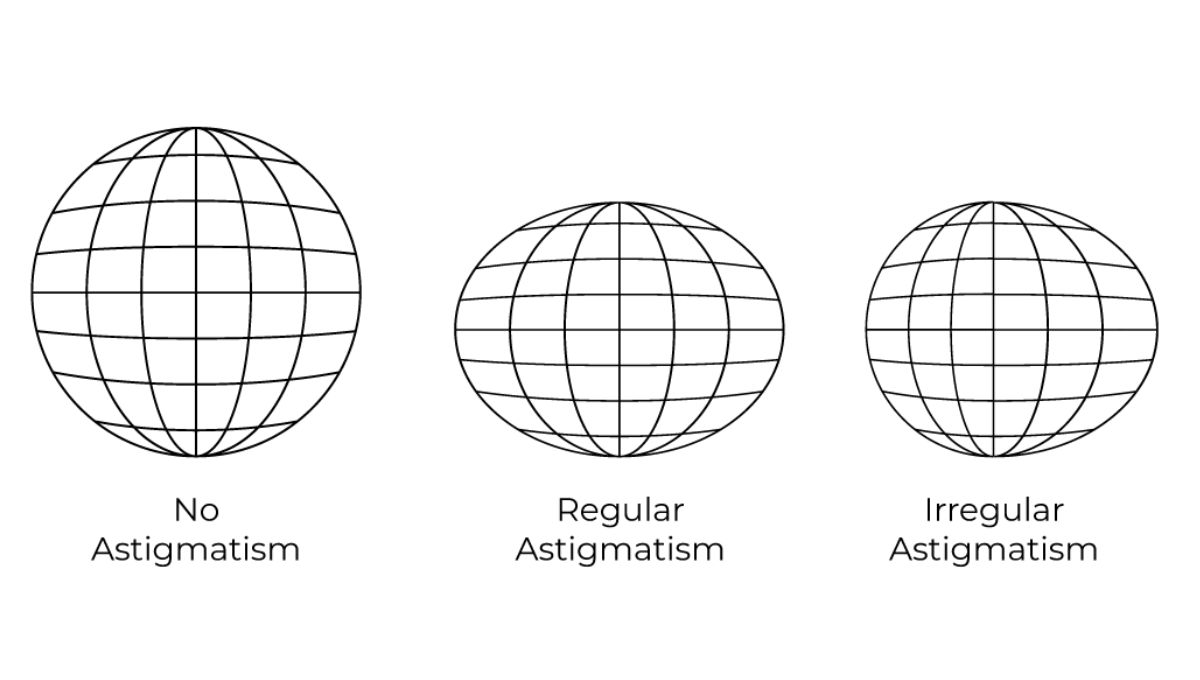
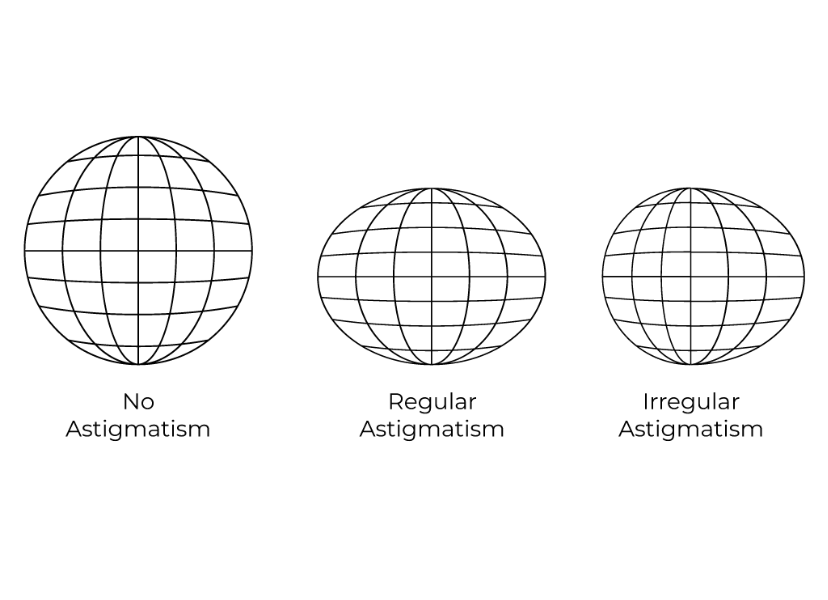
Can I do an astigmatism test online?
To understand if you suffer from astigmatism, you can do a self-astigmatism test online.
There are 2 easy ways to quickly diagnose astigmatism. These basic astigmatism tests can be done from the comfort of your home. They can help you then decide whether you need to consult an eye specialist to get a more detailed evaluation of your vision needs. If you already wear prescription glasses or contact lenses, you can take these tests while wearing either.
The line test


- Position yourself 2-10 feet away from the screen
- Start by closing one eye and looking carefully at the lines
- Repeat this with both eyes
If the lines appear to be the same color and thickness, likely, you may not have astigmatism. However, if there are differences, your vision is likely blurred, and you may have astigmatism. You should consult your eye specialist at your earliest convenience.
The dial test
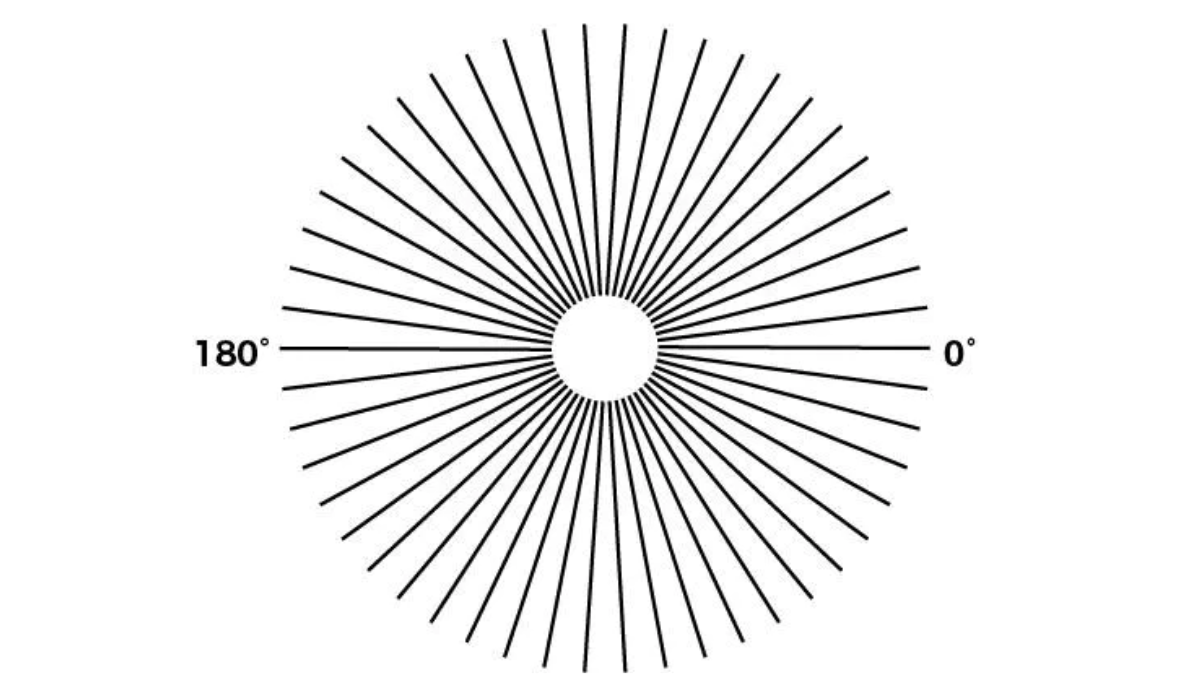
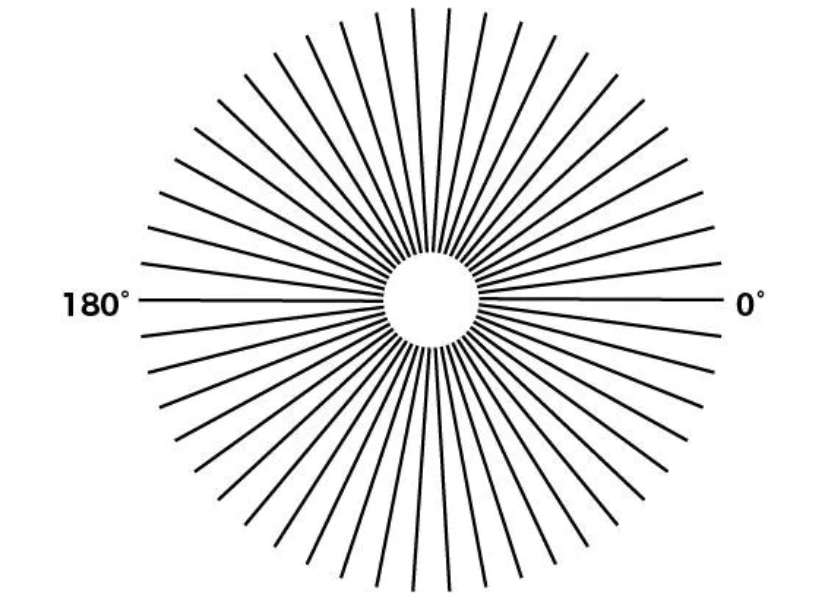
- Position yourself 2-10 feet away from the screen.
- Start by closing one eye and looking carefully at the lines.
- Repeat this with both eyes.
If the lines appear similarly dark, likely, you may not have astigmatism. However, if one or more lines appear darker than the rest, you may have astigmatism. You should consult your eye specialist at your earliest convenience.
Another way to check for astigmatism is to take a trip to your local optician for an eye test. The optician can identify whether or not you have astigmatism and what type of correction you may need.
There are 3 types of astigmatism tests an eye doctor can perform:
- Refraction: When during an eye test, you look at an eye chart which helps determine if you have refractive errors, like astigmatism. This particular test helps to see how your eyes can bend light.
- Keratometry: This will help measure the cornea’s curvature and see how much astigmatism you have. This a useful test if you want to use contact lenses.
- Corneal topography: This can give you a detailed map and measurement of the cornea and can help detect irregular astigmatism.
How to correct astigmatism?
In general, astigmatism can be corrected. For almost all types of astigmatism, glasses and contact lenses can help correct your blurred or distorted vision. In the case where your astigmatism is very mild, you may actually not need any corrective lenses at all.
There is also laser eye surgery to help correct astigmatism, known as refractive surgery. This type of operation helps reshape your cornea and is permanent. In any case, you should consult an eye doctor for a comprehensive eye exam before deciding what type of correction you may need to treat astigmatism.
Eyeglasses
As we know, various types of lens materials can be used to help correct visual impairments. Some of the most used materials for lenses are:
- Polycarbonate
- High-Index
- Trivex
- Plastic (standard)
The type of lens material will depend on the severity of astigmatism, and usually, the higher it is, the thinner your lenses should be, like high-index lenses. High-index is more expensive but is lightweight and provides high visual clarity.
If you have mild astigmatism and your prescription is lower than 1.00, plastic lenses can be a good choice and are also more affordable than other materials. For moderate or more severe astigmatism, you may consider investing a little more money in polycarbonate, Trivex, or even high-index lenses.
Contact lenses
There are various uses for contact lenses, whether you wear them occasionally, daily, or monthly. The types of contacts you can use to help correct astigmatism are:
Soft lenses can be used if you have mild astigmatism. Known for its soft and flexible material that can be divided into daily disposables, weekly/monthly disposables, and extended wear. For this type, you’d be given toric lenses to help correct your astigmatism.
Rigid contact lenses can also be used to help correct astigmatism. The type of hard contacts used are called RGP (rigid gas permeable) and initially are not as comfortable as soft contacts. Many do find that RGP contacts allow for clearer vision and are good for correcting irregular astigmatism like Keratoconus.
There are also hybrid contact lenses you can use for astigmatism, which have a hard center (RGP) and softer edges. Compared to RGP contacts, hybrid ones are a little clearer but also a bit more expensive and usually custom-made for you.
So, what is astigmatism?
Essentially your eyes’ corneas have different shapes than normal ones, they look more oval rather than round. This oval shape is what causes blurry and distorted vision. It may be an early sign of astigmatism if you begin to experience distorted or blurry vision alongside eye strain and headaches.
Although astigmatism isn’t a serious eye health issue, you should consult an optician or do a self-test to identify it quickly. There’s no way to prevent astigmatism, but various ways exist to help correct it.
At SmartBuyGlasses, you’ll find the best correction for your astigmatism with a pair of prescription glasses or contact lenses. If you are interested in learning more about astigmatism, have a look at our Optical Center.
Related articles


Related articles







































